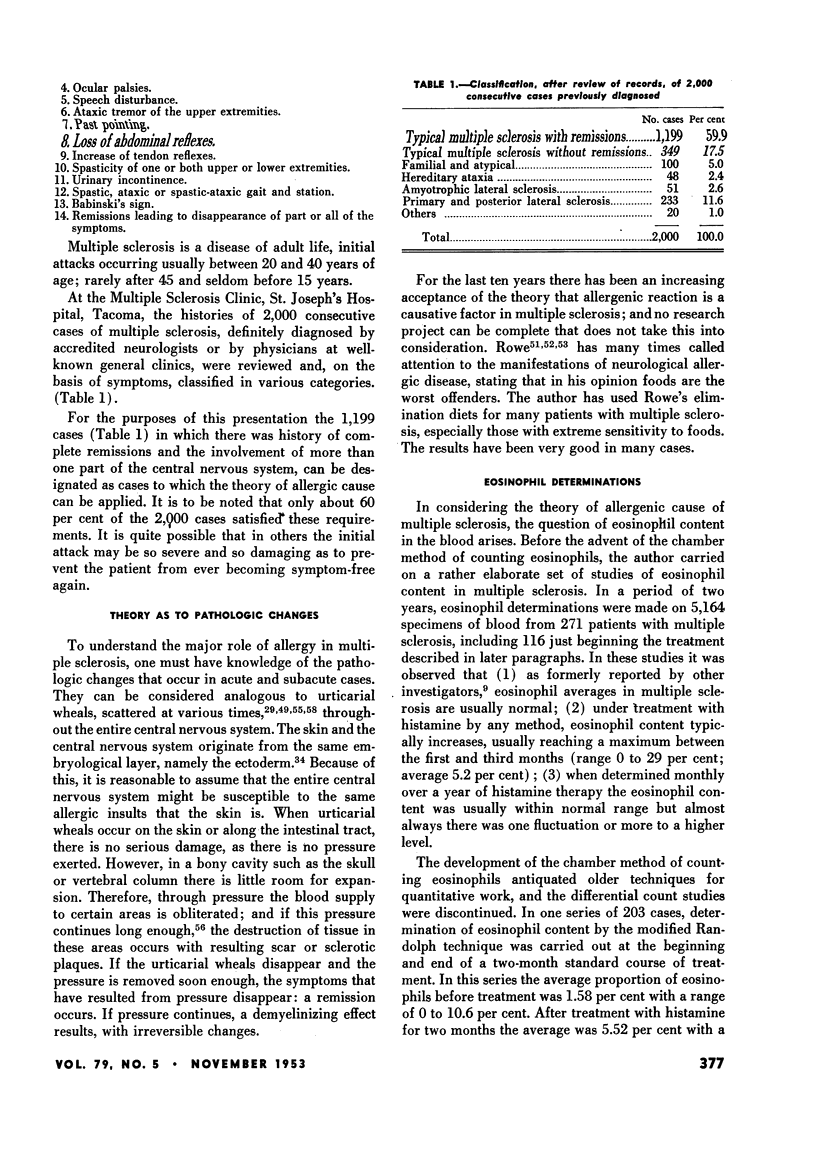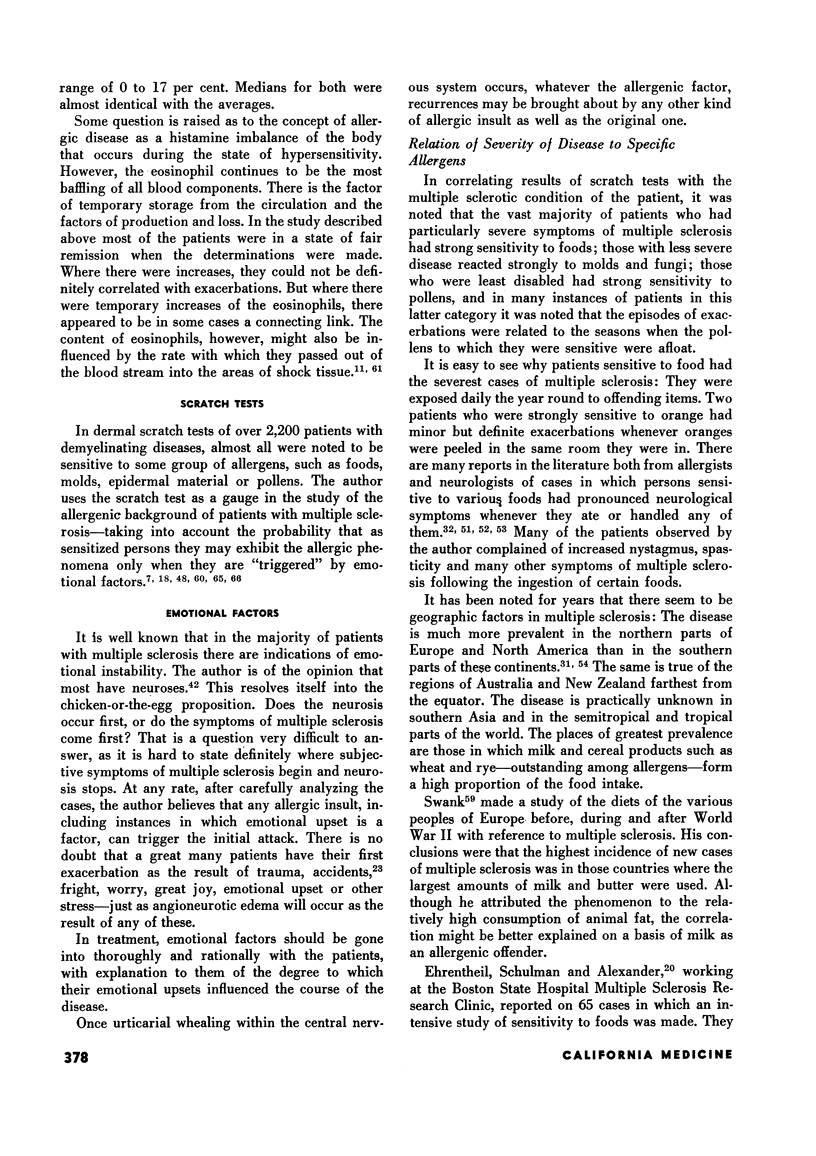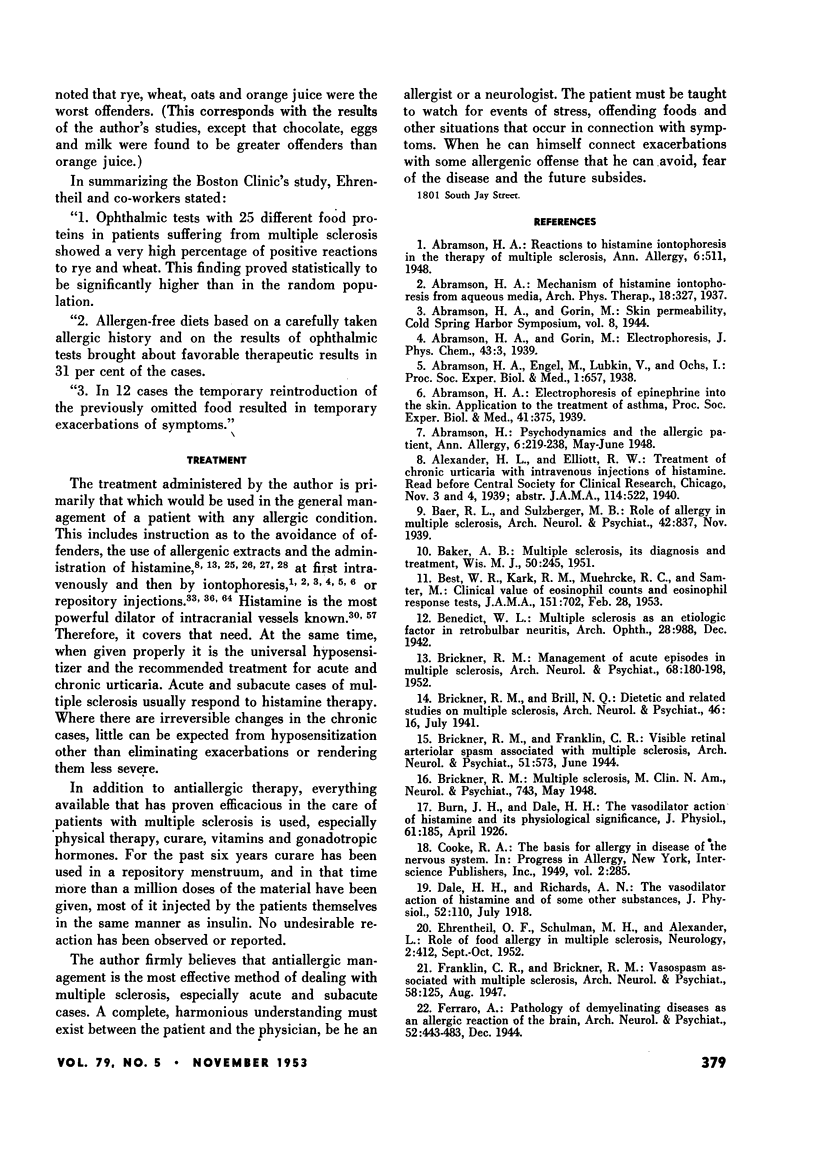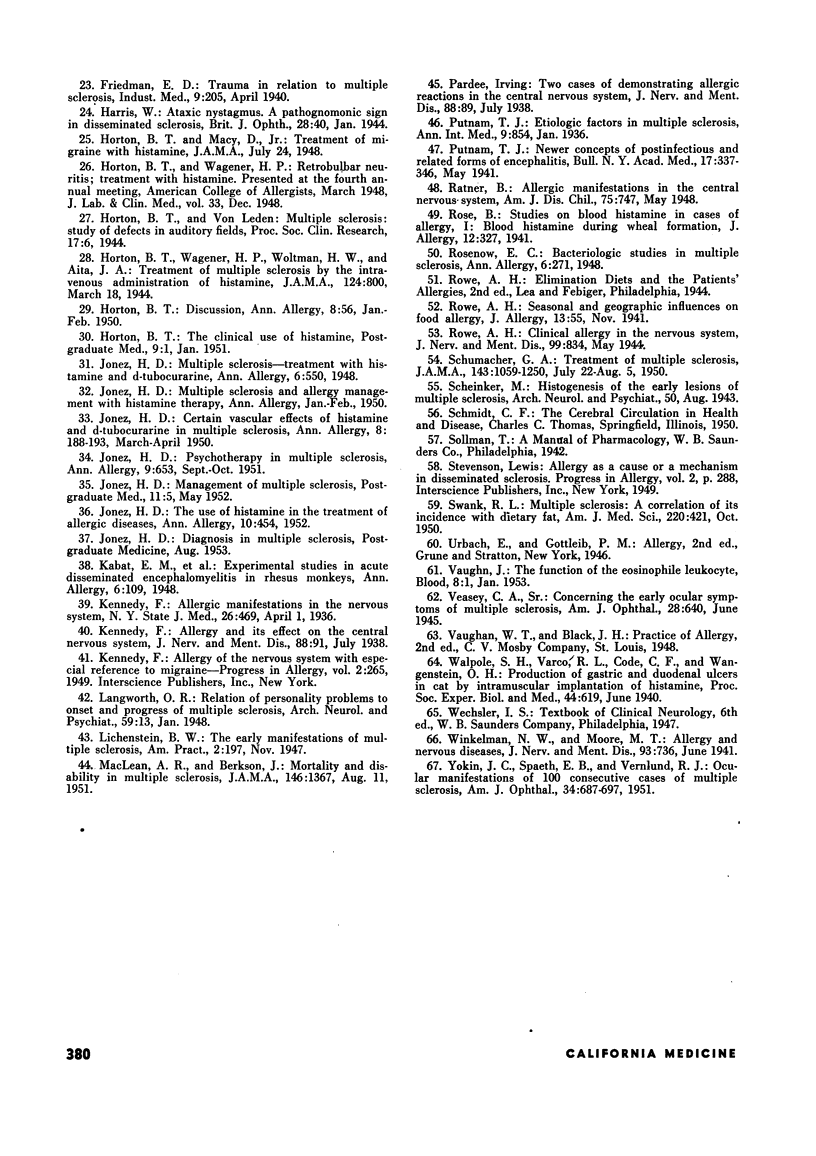Abstract
For the past ten years there has been an increasing acceptance of the theory that allergenic reaction is a causative factor in multiple sclerosis. In the study of a series of patients the author traced many attacks directly to allergenic insults. When the offending substances were removed, a quiescent period often ensued. The severest symptoms of multiple sclerosis were most often associated with food allergens, the moderately severe with molds and fungi and the least severe with pollens and chemical offenders.
The earlier the diagnosis and the beginning of treatment, the better the chance of arresting the disease and preventing serious crippling conditions. In cases of longer duration where the patient has become crippled or bedridden, physical therapy with relaxing medication is of great value.
Full text
PDF




Selected References
These references are in PubMed. This may not be the complete list of references from this article.
- BAKER A. B. Multiple sclerosis--its diagnosis and treatment. Wis Med J. 1951 Mar;50(3):245–249. [PubMed] [Google Scholar]
- BEST W. R., KARK R. M., MUEHRCKE R. C., SAMTER M. Clinical value of eosinophil counts and eosinophil response tests. J Am Med Assoc. 1953 Feb 28;151(9):702–706. [PubMed] [Google Scholar]
- BRICKNER R. M. Management of acute episodes in multiple sclerosis; a preliminary report. AMA Arch Neurol Psychiatry. 1952 Aug;68(2):180–198. doi: 10.1001/archneurpsyc.1952.02320200018004. [DOI] [PubMed] [Google Scholar]
- Burn J. H., Dale H. H. The vaso-dilator action of histamine, and its physiological significance. J Physiol. 1926 Apr 23;61(2):185–214. doi: 10.1113/jphysiol.1926.sp002283. [DOI] [PMC free article] [PubMed] [Google Scholar]
- Dale H. H., Richards A. N. The vasodilator action of histamine and of some other substances. J Physiol. 1918 Jul 10;52(2-3):110–165. doi: 10.1113/jphysiol.1918.sp001825. [DOI] [PMC free article] [PubMed] [Google Scholar]
- EHRENTHEIL O. F., SCHULMAN M. H., ALEXANDER L. Role of food allergy in multiple sclerosis. Neurology. 1952 Sep-Oct;2(5):412–426. doi: 10.1212/wnl.2.9-10.412. [DOI] [PubMed] [Google Scholar]
- Harris W. ATAXIC NYSTAGMUS: A PATHOGNOMONIC SIGN IN DISSEMINATED SCLEROSIS. Br J Ophthalmol. 1944 Jan;28(1):40–42. doi: 10.1136/bjo.28.1.40. [DOI] [PMC free article] [PubMed] [Google Scholar]
- JONEZ H. D. Certain vascular effects of histamine and d-tubocurarine in multiple sclerosis; Part III. Ann Allergy. 1950 Mar-Apr;8(2):188–193. [PubMed] [Google Scholar]
- JONEZ H. D. Psychotherapy in multiple sclerosis. IV. Ann Allergy. 1951 Sep-Oct;9(5):653–659. [PubMed] [Google Scholar]
- JONEZ H. D. The use of histamine in the treatment of allergic diseases. Ann Allergy. 1952 Jul-Aug;10(4):454–464. [PubMed] [Google Scholar]
- MacLEAN A. R., BERKSON J. Mortality and disability in multiple sclerosis; a statistical estimate of prognosis. J Am Med Assoc. 1951 Aug 11;146(15):1367–1369. doi: 10.1001/jama.1951.03670150001001. [DOI] [PubMed] [Google Scholar]
- SCHUMACHER G. A. Multiple sclerosis. J Am Med Assoc. 1950 Jul 22;143(12):1059–contd. doi: 10.1001/jama.1950.82910470001007. [DOI] [PubMed] [Google Scholar]
- SWANK R. L. Multiple sclerosis; a correlation of its incidence with dietary fat. Am J Med Sci. 1950 Oct;220(4):421–430. [PubMed] [Google Scholar]
- YASKIN J. C., SPAETH E. B., VERNLUND R. J. Ocular manifestations of 100 consecutive cases of multiple sclerosis. Am J Ophthalmol. 1951 May;34(5 1):687–697. doi: 10.1016/0002-9394(51)92278-7. [DOI] [PubMed] [Google Scholar]


